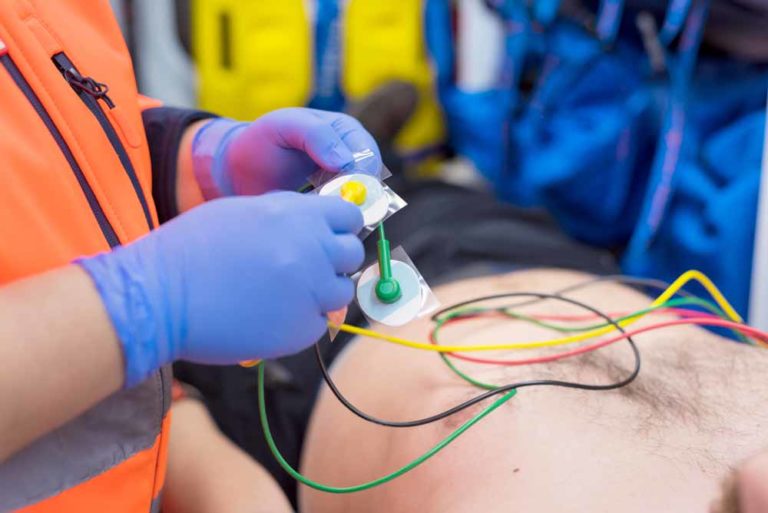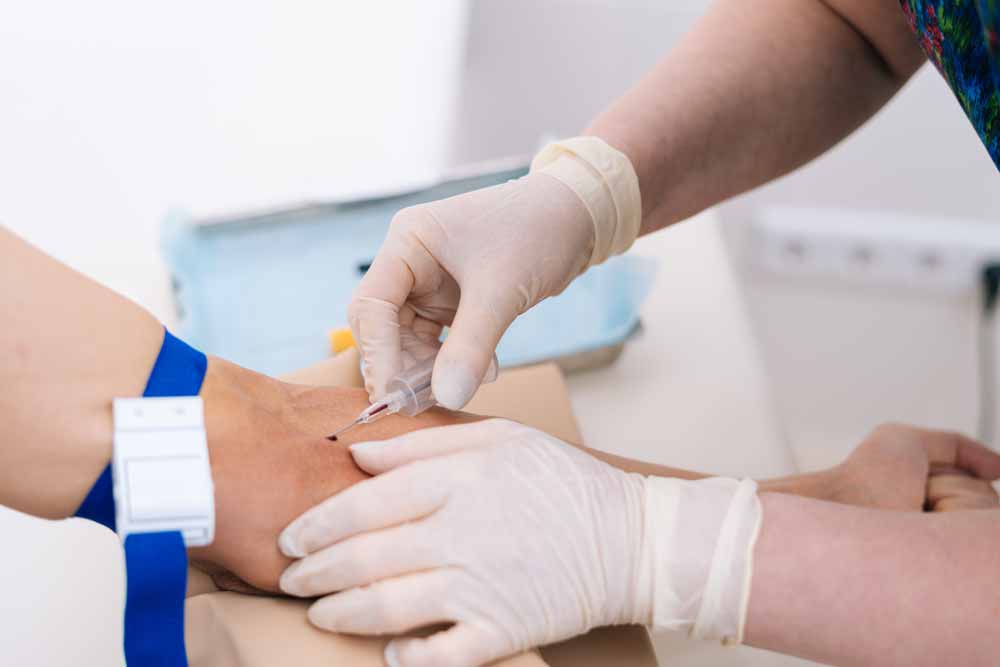Drug Resistance in Pneumonia (DRIP) Score. Online Calculator

The purpose of the DRIP score is to determine when broad-spectrum antibiotics should be used to ensure treatment is effective and to avoid increasing antibiotic resistance.
May be used in patients with community-acquired pneumonia.
The DRIP score is a clinical predictive tool that helps predict which cases of bacterial pneumonia may be resistant to antibiotic therapy.
The DRIP score for drug resistance in pneumonia requires the addition of the selected points, if available:
| Major Risk Factors | |
| Antibiotic use within 60 days | +2 |
| Long term care resident (including long term acute care, skilled nursing, and inpatient rehabilitation but not assisted living or group home facilities). | +2 |
| Tube feeding nasogastral, nasojejunal, or percutaneous endoscopic gastrostomy (PEG) | +2 |
| Prior drug-resistant pneumonia diagnosis within 1 year | +2 |
| Minor Risk Factors | |
| Hospitalization within 60 days | +1 |
| Chronic pulmonary disease | +1 |
| Poor functional status Karnofsky Performance Status <70 or non-ambulatory status | +1 |
| H2 blocker or PPI within 14 days | +1 |
| Active wound care at time of admission | +1 |
| MRSA colonization within 1 year | +1 |
| Is this a COVID-19 patient? For research purposes only; answer does NOT impact results | Confirmed positive |
| Suspected | |
| Unlikely | |
| Confirmed negative |
Interpretation:
| DRIP Score | Interpretation |
| <4 | Low risk of drug-resistant pneumonia. Consider treating without extended-spectrum antibiotics. |
| ≥4 | High risk of drug-resistant pneumonia. Extended-spectrum antibiotics likely necessary. |
The DRIP score is more sensitive (82% vs. 79%), more specific (81% vs. 65%), and reduces the use of unnecessary extended-spectrum antibiotics compared to the HCAP score by 38%.
The DRIP score was also more specific and accurate than eight other predictive models, including the Shorr score.
- A patient with a DRIP <4 can be effectively treated without the use of broad-spectrum antibiotics.
- A patient with a DRIP score of ≥4 is more likely to need broad-spectrum antibiotics.
At a cut-off value of ≥4 points, DRIP optimally differentiates between high and low risk, confirming its usefulness as a clinical decision tool for empiric antibiotic choice.
The DRIP score should only be used for bacterial causes of pneumonia.
- False negative results may occur in the following situations: Methicillin-resistant Staphylococcus aureus (MRSA) or P. aeruginosa, severe COPD (requiring O₂ and steroids), intravenous drug use, psychiatric illness, and homeless status.
- False positive results may occur with S. pneumoniae and methicillin-susceptible Staphylococcus aureus (MSSA).
The DRIP study confirmed that antibiotic use and hospitalization 60 days prior were major causes of drug resistance, but did not find a strong association between disease severity and drug resistance.
Register on our website right now to have access to more learning materials!
Subscribe to our pages:
Literature
- Webb BJ, Dascomb K, Stenehjem E, et al. Derivation and Multicenter Validation of the Drug Resistance in Pneumonia Clinical Prediction Score. Antimicrob Agents Chemother. 2016;60(5):2652-63. https://journals.asm.org/doi/pdf/10.1128/AAC.03071-15
- Webb BJ, Dascomb K, Stenehjem E, et al. Derivation and Multicenter Validation of the Drug Resistance in Pneumonia Clinical Prediction Score. Antimicrob Agents Chemother. 2016;60(5):2652-63. https://journals.asm.org/doi/pdf/10.1128/AAC.03071-15
- Webb BJ, Sorensen J, Mecham I, et al. Antibiotic Use and Outcomes After Implementation of the Drug Resistance in Pneumonia Score in ED Patients With Community-Onset Pneumonia. Chest. 2019. https://journal.chestnet.org/article/S0012-3692(19)31012-8/fulltext
Read also:
Karnofsky Performance Status Scale Online Calculator
Karnofsky performance status scale determines ability of patient to tolerate chemotherapy. For patients ≥ 16…
Focused Assessment with Sonography for Trauma (FAST): Online Calculator
Focused Assessment with Sonography for Trauma (FAST) predicts the presence of pericardial or intra-abdominal injury…
Interactive OSCE Checklist – Emergency care of a patient with chest pain – Acute Coronary Syndrome with ST-segment elevation and equivalents
Maximum Allowable Blood Loss (ABL) Without Transfusion: Online calculator
Maximum Allowable Blood Loss (ABL) Without Transfusion formula can be used in patients with blood…
Revised Cardiac Risk Index for Pre-Operative Risk (RCRI) Online Calculator
The revised cardiac risk index for preoperative risk may be used in patients ≥45 years…
POSSUM for Operative Morbidity and Mortality Risk – Online Calculator
POSSUM calculates the risk of surgical morbidity and mortality, which can be used to help…











